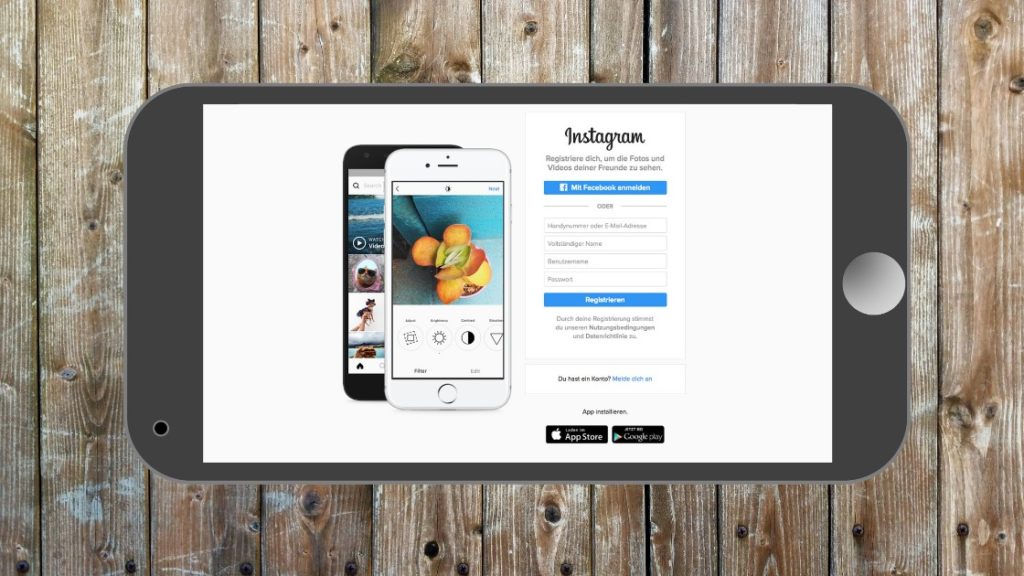Some sellers tend to rely, solely, on Amazon’s internal mechanisms to generate sales. They focus only on what they can do within the marketplace. This tunnel vision prevents them from reaching a bigger audience by promoting their products on channels outside Amazon. For instance, on social media.
According to Statista, around 2.95 billion people used social media worldwide in 2019. And this number is projected to increase to almost 3.43 billion by 2023.
So, it is clear that, using your social media channels to direct traffic into your Amazon store and product listings can increase conversion rates. This practice could also be a great complement to your advertising strategy.
But social media marketing on Amazon is more than getting the most users at the lowest cost-per-click.
Sellers need to create effective and targeted Amazon social media strategies. Otherwise, you are just wasting resources and hurting your business’s standing.
Today, we are going to discuss some tips to improve your Amazon social media strategy for better engagement.
Amazon Stores

Before we dive into Amazon’s social media strategies, we need to learn about Amazon Stores. This is a free service for Sellers, Vendors, and agencies with a registered brand.
The goal of an Amazon Store is to create and customize dedicated destinations on Amazon so sellers can showcase their brand in an appealing way to gain more visibility and to potentially attract more shoppers.
It is, in effect, a landing page to showcase your brand and product portfolio.
You can create or edit your Store using Amazon’s Store Builder on Seller Central. Here is how you can do it:
- Go to Stores and click on Create Stores next to your brand name.
- Enter your brand display name and upload your logo image. This is your shopper-facing name and will be used in the Store’s URL and breadcrumb.
- Enter your meta description for your home page.
- Select a template for your Store or start with a blank page.
- Click Create and start adding content.
- Submit your Store for publishing. It will be reviewed within 24 hours to ensure it meets Amazon’s policies.
That’s it! You can now create a customizable Amazon storefront in Seller Central. Storefronts make the interaction between customers and sellers a lot easier. This feature allows you to engage your audience by:
- Creating a design to show off your brand’s best qualities;
- Telling your brand story through personalized text, images, and videos; and by
- Sharing how your business started so customers can create an emotional bond with your brand.
Now you need to attract customers to your Store.
You can set up sponsored or display ads campaigns, or promote your Amazon URL (such as amazon.com/ BRANDNAME) off the marketplace, or through your social media accounts. The way to do it best is by creating content that will capture your audience’s attention.
But that’s just the first step. You must also consider what platforms you plan to use to drive traffic and convert visitors into customers.
About Content Sharing
For Amazon sellers and brands, social media can generate leads, influence brand loyalty, drive traffic, and improve customer service.
Compelling social media posts can tell customers more about your brand. It’s an effective channel for users to know what your products are really about, before making a purchase.
Also, you can develop true interaction with your audience by providing insider info: discount sales, new launches, and more.
There are different platforms you can use to boost your sales on Amazon. These include Facebook, Instagram, Twitter, YouTube and Pinterest.
Your Amazon social media strategy will vary depending on your business. Some channels will make more sense for your store and products.
You may only need a Facebook or Instagram account. Or maybe you find that Twitter and LinkedIn perform best for you.
Define your target users and set your themes and style. Then audit your content, branding and ads campaigns to select the best platforms for you.
Amazon and Social Media

Once you are ready to jump into social media marketing, test some of the next tips to drive traffic to Amazon:
Build your Presence
Establish Your Voice – Make sure your content reflects what your business is about. Post, share and connect with users and influencers who share your values. They will help you promote your store with honesty.
Invest on Visuals – Your social media assets should be compelling, interesting, and professional. Keep quality at the top, whether you are using lifestyle imagery, product shots, or sharing information.
Show Your Face – Share some personal content with customers. Amazon stores don’t have much space for event photos or snapshots of your employees. Use social media to tell your brand story in a way that connects with users on a personal level.
Join the Community
Customer Service – Social media platforms are outlets for shoppers to raise concerns, ideas, or questions directly with you. Be sure to address queries, and complaints, let customers know you are paying attention.
Cross-Promotion – Tagging and networking third-party content should be part of your social media strategy. This can boost your exposure, and also increase your followers.
Interaction – Be sure to interact with communities and use relevant hashtags. This gives you a jumping off point to boost discovery, increase awareness, and gain new followers.
Tie It Together – Give users access to social media from websites, emails, and Amazon. This will keep loyal customers on your radar.
Organization Is Key
Share Regularly – Post meaningful content consistently. This will build engagement, boost likes, follows, shares, and more. Remember, a consistent and engaging presence will create visibility.
Create a Calendar – But you don’t want to overwhelm users. Your posting frequency will depend on your industry, audience, and current engagement. So, test your timing and post-type to see what works for your business.
Test and Measure – And be sure to evaluate post performance to determine what type of content gets more traction.
Amazon Stores features an Insights Dashboard. This tool provides you with a powerful recap of your sales, visits and page views.
If you promote your Store in external marketing activities, you can also add a tag to the URL to analyze traffic sources to your Store.
Social Media Campaigns for Amazon
Here are some ideas that will help you boost your Amazon business through social media platforms.

Facebook boasts an outstanding 2 billion+ active users. So, it allows more visibility of Amazon on social media. This social media platform is a great funnel that provides a fan base for Amazon stores, and you can use it as an effective selling tool.
In addition, the social media platform has sophisticated ad targeting tools for sellers to display their ads to Facebook users.
You can use the next three strategies to create an Amazon social media campaign on Facebook:
1. Product Listing Traffic
Link a product listing URL to a social media post or add, using a specific keyword. Each click will send customers straight to por product listings on Amazon.
The post you create for this strategy should stand out. Consider using a discount or promotion value to the customer. The goal is to boost sales while improving visibility for a specific search term.
Also, make sure you target the post to people who most likely will want to buy your product. Otherwise, you are just sending people to the page who don’t buy the product. If you’re not careful, this will decrease your conversion rates.
2. Sales Funnel
Direct traffic offers limited interaction with users. But the goal is to retarget your audience and create a loyal customer base.
You can get more information about your audience building a sales funnel. This tool allows you to build email lists, advertising pixels or tags to filter out traffic. You can also pinpoint the users who are really interested in your offer, and re-market to them.
Sales funnels allow you to reduce sending traffic without conversions. It also gives you the chance to interact with potential customers directly. It’s a good opportunity to inform shoppers about your brand or product.
3. Active Engagement
Automated messengers, such as chat bot programs, are great to answer customer questions and make them feel more connected to you.
Create a piece of content that requires customers to post or reach out through Facebook Messenger. Then you can set up personal chat sequences to address any concerns they have.
This allows you to guide shoppers and make their experience with your brand more positive. It also allows you to retarget customers on Facebook.
You can also send these customers to your Amazon store or a product listing they have engaged with your chat sequences.

Instagram is a growing platform. This is the reason why it is often cited as the best platform for eCommerce companies to establish a social media presence.
Most Instagram users are tech-savvy people who fall within the millennial demographic. Plus, many sellers already use the platform to generate sales through Instagram Shopping.
Instagram is also a visual-centric platform. And as the saying goes, “a picture is worth a thousand words.”
Shoppers want to see what they are buying, and there’s no better way to get your products in front customers than a picture.
The Instagram game is about visibility. The Platform’s algorithm looks at total engagement when deciding what content will be displayed on users’ feeds.
Posts which get quick comments and likes signal that you’ve posted quality content and Instagram places more priority on displaying it.
You can use the following four strategies to create a successful Amazon social media campaign on Instagram:
Optimize Your Bio
Work on your bio. You need to make a great first impression, and your buy is the first feature customers will see. Therefore, make it interesting and captivating.
Add a short description to explain who you are and where users can find your products. Keep it light and simple, and avoid a sales tone.
Make sure that you also add your Amazon URL to your brand page. You can also change the link constantly to promote your most recent products.
Take this same care with all your Instagram post descriptions. Write good captions to make customers interact with your content.
- Instagram Stories
This feature produces high engagement and helps you to stand out from the cord. Creating regular Instagram stories is a great way to stay in touch with your customers and grow awareness.
Besides the more a user interacts with your Instagram Stories, the more likely your posts are to show up on their feed.
2. Partnerships
Being mentioned by other accounts can expose you to new audiences. Work out deals with similar brands and sellers to cross-promote each other’s products. This will secure more sales and followers for all parties.
Also, partner with influencers to help promote products on Instagram. They have a superior engagement rate and a nice following which you can definitely benefit from.
Paying for mentions, posts, or stories from an influencer is a fast, reliable, and convenient way to advertise your product.
3. Meaningful Engagement
Engagement is the key to Instagram. Talk to your fans, develop connections with your customers.
For example, an Instagram user shares a picture of themselves with your product, reach out and ask if you can post it on your official page.
Including questions in your captions will make your audience active. It could solve any concerns and improve your engagement rate.
A Few Extra Tips
Once you pick your social media platform and strategy, you can devise a strategy to drive customers to Amazon. This can be a long process, but steady diligence pays off.
here’s a bit more to take care of, however. If you want to make a long-lasting presence on social media, keep these principles in mind:
- Know Your Best Content
Determine which are your best quality ads according to the social media algorithms. Focus on:
- Engagement – This means the total number of likes, comments and views a post generates. It’s a great metric to determine the quality of your content.
- Performance – It is based on your click-through rate. Use it to rate the value and quality of your posts.
Social media platforms prioritize ads that engage because these are the ads that customers find useful.
2. Use Your Keywords
Find the most relevant terms for you and your audience. A good strategy is to focus on long-tail keywords. These are phrase variations of basic keywords. They are more specific and useful to target a narrower audience.
You can also write posts and descriptions using terms that contain your most relevant head terms. Prioritize words and short phrases that identify your product. Shoppers use these search terms on a regular basis.
Keyword research will boost your performance and relevance on social media. Also, it will tell you what drives your customers to your products.
3. Social Media Etiquette
Always keep decorum at the forefront of your social media strategies. This will save you from penalties and help you engage more customers.
Here is a brief social media etiquette guideline to preserve your social media status:
- Over-promotion – Constant ads sharing may annoy some shoppers. It’s better to strike a balance between promotional and valuable content.
- Excess Automation – A little automation is good to lighten the load of your social media activities. Do not overdo it, though. The human factor will also allow you to build up truthful interactions with your audience.
- Hashtag Overload – Some platforms may penalize posts viewed to be abusing hashtags. Also, moderate hashtag use upholds your brand’s image and search value.
- Bad Mouthing – Make the right choice by maintaining a healthy professional – and personal – integrity at all times. Posting negative comments or false information will hurt you more than it will hurt your competitors.
- Honesty – Potential customers are well-equipped to research facts and information about your posts. Do not sugar coat an ad or marketing tactic, always be honest about.
Final Thoughts
You should not ignore social media’s potential to boost your Amazon sales. It is an opportunity that you can’t let pass by.
A little Facebook and Instagram know-how is sure to drive traffic to Amazon with social media advertising. These platforms are stages to showcase products, connect with audiences, and establish credibility.
That said, getting the best return on social media will require testing. You will need to test your audiences and ad content constantly to find the right mix of traffic sources.
The tips in this article are easy to implement – they just take some time to make sure they boost your Amazon store needs.
Do not hesitate and establish a reliable presence on social media. Soon you’ll sell more products on Amazon, and develop meaningful connections with your customers.
About the Author

Esteban Muñoz is an SEO copywriter at AMZ Advisers, with several years’ experience in digital marketing and e-commerce. Esteban and the AMZ Advisers team have been able to achieve incredible growth on the Amazon platform for their clients by optimizing and managing their accounts and creating in-depth content marketing strategies.


